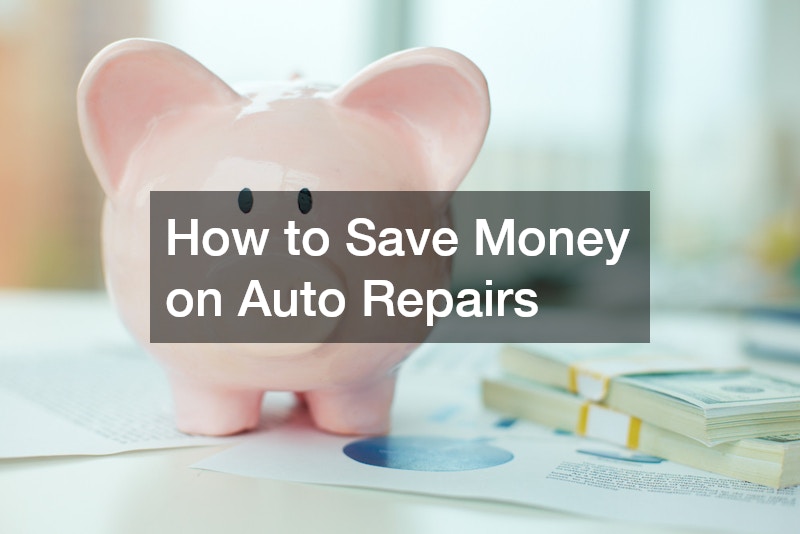
6 HOME IMPROVEMENTS TO MAKE BEFORE SELLING YOUR HOME
When you’re preparing to sell your house, it may be hard to consider house improvements… for the benefit of someone else. However, the truth is that adopting the necessary changes will also help YOU significantly. Numerous home upgrades might help you boost your house’s appeal to potential buyers — as well as its estimated value.
Therefore, what are the best home upgrades to make before selling? Which house upgrades are truly significant to prospective buyers? And which upgrades are simply not worth the investment of money, time, and effort? We’ve compiled a list of top six home renovations that truly matter when it comes time to sell.

What’s the Golden Rule of Remodeling Homes Before Selling Them?
First and foremost, the Golden Rule of Remodeling a house before selling is: Concentrate on What Really Matters in Your Market. According to professionals, the most critical aspect is to consider is your potential buyer’s perspective. This typically entails putting aside personal tastes and fighting the impulse to use that lemon-pound-cake bright paint or ultra-trendy light fixture you adore. Instead of that, it’s mostly about striking a balance between practical issues and timeless, mass-appeal stylistic choices that will resonate to the majority of purchasers in your market.
It’s also about balance. You want to avoid investing in house modifications that will fail to generate revenue in your local market. Therefore, before you embark on a home repair project with a resale element, take the time to analyze the anticipated return on investment (ROI). Remodeling features a handy cost vs value calculator to assist you in determining the amount of money you can recuperate from popular remodeling tasks. Filter by region to obtain a more precise view of your neighborhood. Additionally, you can utilize HomeAdvisor’s True Cost Guide to obtain accurate rates based on actual costs for comparable projects in your region, providing you with a better idea of what to expect.
Consult your realtor about the patterns they’re observing in your neighborhood. Inquire about their expert advice on which precise modifications are most likely to increase the value of the home you intend to sell. Without further ado, here are six of the best house upgrades for house sellers.
1. Repair Necessary Components Such as Your HVAC, Roof, and Plumbing
Few homebuyers are excited about purchasing a property with the expectation that the roof would need to be replaced in a year or two. Similarly, few homebuyers would be overjoyed to learn that they will almost certainly need to fix or replace a home’s costly ventilation, heating, or do plumbing systems and air conditioning repair immediately. homebuyers prefer buying a home with functioning home’s basic systems. A house with leaking roofs will send buyers away. Maintenance also quickly eats up a lot of cash, and people are terrified of that.
Repairing these components will also help you avoid unpleasant surprises during your home inspection by residential electrical service or roofing companies. To be clear, we do not advocate any pre-sale replacement or repair of items that are still in reasonable condition. However, if the home inspection reveals significant faults, it may be worthwhile to hire commercial building companies to fix or replace these components. Your agent may be able to assist you in making the decision by balancing the cost, risk, and return on investment.
2. Fix Interior Flooring and Paint
Those interior floors and walls take a pounding over time. If you do not address these flaws, you risk giving prospective buyers the image of a lower-quality, badly managed home. These visceral emotions have financial implications, appearing as decreased buyer interest and offer acceptance.
Any significant flaws in the paint work on your walls must be repaired, but this is more than a matter of upkeep. Above all, a prospective buyer must be able to envision himself or herself in the room, and the paint on the walls has a significant impact on how vivid that picture can be. When repainting with the intention of selling, it is better to use neutral colors. However, this does not mean that everything must begin and end in white. There are numerous neutral colors to choose from, including a variety of relaxing gray tones.
In certain rooms, a thorough cleaning of the floors or walls may suffice. When cleaning is no longer sufficient, it is time to paint. Fortunately, applying a new coat of paint to interior walls is a reasonably simple and inexpensive do-it-yourself activity. Additionally, the fresh-paint fragrance might have a beneficial sensory effect on potential buyers, imparting a sense of ‘newness’ to your home. Maintain a cheerful, light-reflecting, systematic paint color palette in the right finish for each room.
Peel-and-stick floor tiles are a simple, cost-effective, and long-lasting DIY solution for kitchen, bathroom, or basement flooring. If the carpets are in good condition, a deep clean will get t job done. However, if the carpet is stained, out of date, or filled with pet odors, it is probably time to replace it.

3. Enhance Your Curb Appeal
Do not undervalue the importance of curb appeal! In the homebuying process, first impressions are critical, so do all possible to encourage potential buyers to WANT to purchase your house. Based on the weather and your circumstances, you may wish to consider the following:
• Eliminate Outdated Window Treatments: Dingy draperies, torn blinds, or bent mini-blinds won’t expedite the sale of a home. Replace these out-of-date pieces with basic white mini-blinds or cut-to-measure wood blinds from a home center. New construction windows and treatments is a rather simple remedy that can completely transform your rooms in a single weekend.
• Install Closet Systems: Packed closets filled with clothing and other things create the illusion of insufficient storage. To avoid that, declutter your closet by donating everything that is no longer needed. After emptying the closet, install a closet organizer from a home improvement store and restock with enough of your belongings to keep the closet looking orderly but not cluttered.
• Replace and Service your sidings: In almost every estate market, siding service and replacement provides a predictable return on investment.
• Upgrade your front door: Similarly, upgrading to a new steel front door is almost always a good investment in terms of return on investment.
• Replacement of garage doors: Replacing the garage door is one of the best expenditures you can undertake before selling your house in terms of return on investment. Overhead garage door typically recoup 94.5 percent of costs while improving curb appeal.
• Improved landscaping, which may include planting new flowers or shrubs. Avoid costly landscape upgrades that will not yield a return on investment in favor of cheap aesthetic solutions that instantly boost curb appeal.
• Pruning appropriately: Trimming bushes and removing small tree limbs can significantly improve the looks of your yard (increasing both curb appeal and sights from the house). Additionally, keep your lawn weeded, mowed, and in good condition. Otherwise, you run the danger of giving purchasers the notion that your yard is difficult to manage.
• Remodel your driveway: Numerous residential properties feature driveways. Improving the driveway begins with selecting the appropriate material. Gravel is the preferred material for driveway construction. Consult with your neighbors to determine the best driveway gravel delivery services to remodel your driveway.

4. Remodel your kitchen.
How buyers see your kitchen can truly make or break a transaction. However, there is no reason to construct your fantasy kitchen when selling the house. Prioritize quality, appeal, and freshness, ensuring that the planned modifications correspond with the needs of customers in your area. Additionally, consider the market price of the house compared to the value of the anticipated renovations. pending between 6% and 10% of the overall value of your home on renovations can earn you a reasonable return.
•Get stainless steel Kitchen appliances- If your equipment is already stainless steel and in good shape, that is fantastic. If they are not, consider replacing them with energy-efficient ones from a reputable brand. Energy-efficient appliances may be a big selling point for environmentally aware shoppers.
• Spruce up your Kitchen Cabinets- Cabinet overhaul is unlikely to provide an incredible return on investment in the most scenarios. However, it may be worthwhile to replace, repair, or repaint cabinet fronts. Similarly, updating out-of-date cabinetry with more contemporary styles can instantly elevate cabinets.
• Upgrade countertops- Apparently, the majority of homebuyers’ desire granite or quartz worktops. Why would you resist? Buyers’ perceptions of your kitchen will be negatively impacted by outdated countertops, so it’s better to give them what they desire. Fortunately, installing new countertops is reasonable if you stick to the less expensive varieties of granite or quartz
• Renovate your Kitchen floors. Depending on the condition/appearance of the flooring, it may be worthwhile to replace it.
•Repaint Walls – Freshly painted kitchen walls have an uncanny ability to accumulate grime. Don’t skimp on the fresh paint in this area. Simply remember to keep your efforts modest and manageable. According to Moving.com, a ‘small kitchen makeover’ will return approximately 81 percent of its price in average selling price, however a ‘large upscale kitchen redesign’ will only return approximately 53.5 percent of its value. Again, a local agent may be able to direct you on kitchen upgrades that will maximize your investment in your market.
5. Remodel your bathrooms.
Additionally, prospective homebuyers place an emphasis on bathrooms. If your bathrooms are in desperate need of remodeling, they are likely to factor in the expense of renovating – a mathematical equation that will work against you. That is why, you need to remodell your bathrooms, despite them not typically providing the same return on investment as kitchen remodels.
Simply concentrate on what would assist in the sale of your bathroom. In the majority of cases, this means letting aesthetics guide your process: removing outdated wallpaper, applying a new paint job, replacing tiling and/or countertops when necessary, and strategically updating fixtures. This may entail replacing your 1970s-era faucet with a sleeker model, increasing the number of contemporary light fittings, or replacing worn-out towel bars. Additionally, if necessary, you may wish to replace the vanity, shower stall, backsplash, and/or tub, door, or toilet. Again, consult with your realtor to determine which improvements are necessary in light of buyer preferences in the market.
6. Remodel Your Basement
According to HomeAdvisor, a typical basement finishing job can generate a return of up to 70%. Additionally, they highlight that a recently refurbished basement may prompt purchasers to enhance their offers. Remodeling your basement before to selling is mostly about boosting your heated floor space, which boosts your home’s base selling price. Investing in new drywall, flooring, and other aesthetics (e.g., paint, lighting, and ceilings) can pay off handsomely, catapulting your home into an entirely new price category.
Make the most of your basement ceilings by leaving enough space for people to stand and move comfortably. Priority should be given to lighting, especially if your basement space is below ground and does not have a walk-out. Consider replacing fluorescent lights with recessed or track lighting to adequately illuminate the space. Finally, ensure that your basement is completely dry. Seal any cracks, inspect the foundation, and add drainage – do everything it takes to ensure that your finished basement is dry, otherwise your efforts will be in vain.
Additionally, finishing your basement offers attractive flexibility to prospective purchasers. Following COVID, more individuals are looking for flexible space that may be used for work-from-home opportunities, remote learning, or simply a room for relaxing. A finished basement can be used for a variety of purposes.
Whether you’re renovating your basement or merely freshening it in preparation for sale, staying basic is the way to go. Drywall, carpeting, trim, or tile, neutral colors, and ample lighting are the essentials for selling your home’s basement area – leave it up to the buyer to design and personalize the room.
Finally, While Minor Repairs Are Beneficial, Do Not get carried away with these minor cosmetic changes, take a moment to assess your home’s essential necessities – are all major appliances in good order? Buyers have specific expectations, which include receiving a well-maintained home that is both safe and livable. In other words, if you’re considering a kitchen redesign but your ceiling is leaking, you should solve the roof problems first by hiring reputable roofing services.
Additionally, while you’re on the ‘fix and enhance’ bandwagon, avoid undertaking pricey renovations that are solely personal in nature, such as that gazebo and water feature out back you’ve always desired. You will not receive a refund for such kind of additions, and purchasers may hesitate if it is not a feature they have always desired. Making home modifications may not seem prudent if you cannot recoup at least 100% of your investment. The advantage of these home upgrades, however, is not simply the opportunity to sell your property for a better price. Additionally, you’ll be able to sell your property faster, and some of these upgrades may be necessary to garner any interest, based on the current situation of the local real estate market.
Consult a local real estate professional to determine which house upgrades are most important in your neighborhood. Some of these enhancements may be less significant than others. Your realtor will be able to provide experienced advice on preparing your house for sale.


